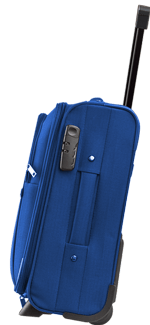Can Hearing Aid Make the Back of Ears Numb
Hearing Aids
Technology and design have advanced
The hearing aid industry has made significant advancements in correcting hearing loss, including the cosmetic impact of hearing aids and technology. Some people feel apprehensive when they recognize they have hearing loss. They don't want to wear a hearing aid. They are uncomfortable that others will know they have trouble hearing.
However, hearing aids have changed considerably in the last few years due to consumer demands. With many people walking around with wireless earpieces for their cellphones and earbuds for MP3 players, the hearing aid industry is making hearing aids that do not look like the traditional hearing aids many think of. Many are so tiny that others will never recognize you are wearing one. The experience of wearing hearing aids has improved greatly through better technology and research.
What kind of hearing aid is right for me?
There are many types of hearing aids on the market, and the audiologists at Johns Hopkins have the expertise and experience to find the right one for your hearing needs. Your audiologist will work with you closely to determine the size, style and technology that is best for you.
The sizes and styles of hearing aids currently available include the following.
Behind-the-Ear (BTE)

Traditional behind-the-ear hearing aids are the most flexible hearing aids available and address the broadest range of hearing loss. A custom ear mold is made of your ear canal. This mold fits into your ear, while the device wraps around the back of your ear.
Who is this right for?
People who have all types of hearing loss.
Pros
- Addresses the broadest range of hearing loss.
- Most durable.
- May be easier to clean and maintain.
- Size 312, 13 or s675 battery (longer battery life).
Cons
- May be visible depending on hairstyle.
- Some people don't like this model when they wear eyeglasses.
- May require a tubing change every six months if an earmold is used.
Receiver-in-the-Canal (RIC)

Receiver-in-the-canal devices are a more popular choice. The open-fit concept means your ear canal is not entirely blocked, and natural sound is able to enter your ear in addition to the amplification. These devices come in a variety of shapes and colors. They are not custom-made and instead come in different sizes depending on the length and shape of your ear.
Who is this right for?
People with high frequency, mild to moderately severe hearing loss.
Pros
- Open fit allows natural sound to enter the ear without occlusion.
- Variety of colors and styles.
Cons
- May not be appropriate for more severe hearing loss.
- May be visible depending on hairstyle.
In-the-Ear (ITE)

Full shell in-the-ear hearing aids are made to fill the outer part of your ear. They have no external wires or tubes, and are very light in weight. An impression is made of your ear, and the entire hearing aid is encased in this shell.
Who is this right for?
People with mild to severe hearing loss.
Pros
- Fits comfortably and securely within the ear.
- No external wires or components – all one piece.
- Easier to manipulate for people with dexterity issues.
Con
- Lack of cosmetic appeal.
In-the-Canal (ITC)
In-the-canal hearing aids are less visible than in-the-ear hearing aids. These devices take advantage of the ear's natural shape and are very small and lightweight. The hearing aid is molded to the inner canal so that sound is naturally funneled through the hearing aid.
Who is this right for?
People with mild to moderately severe hearing loss.
Pros
- Less visible and more cosmetically appealing than ITE hearing aids.
- Small and lightweight.
Cons
- Problems with finger or hand dexterity can make manipulating small controls difficult.
- Possible feedback (whistling) issues with more severe hearing loss.
- May not be an appropriate option for people with chronic external or middle ear issues.
- May be occluding depending on type and degree of loss.
Completely-in-the-Canal (CIC)

Completely-in-the-canal hearing aids are custom fit and are placed deeply into the ear canal, making them the least visible. There is typically a small handle or cord on the device to help remove it.
Who is this right for?
People with mild to moderately severe hearing loss.
Pro
- Least visible of all the styles of hearing aids.
Cons
- Shorter battery life of only three or four days.
- Some people cannot wear them because of the shape of their ear.
- More repairs may be needed due to wax clogging the hearing aid.
- May not be an appropriate option for people with chronic external or middle ear issues.
- May be occluding depending on type and degree of loss.
Whether you're crossing the country or the globe, we make it easy to access world-class care at Johns Hopkins.

Health Library

Explore our health library for more information about conditions and treatments.
Physicians in Your Community

Find a comprehensive range of physicians at convenient locations throughout Maryland.
Locations

See which of our four locations is most convenient for you and request an appointment.
Can Hearing Aid Make the Back of Ears Numb
Source: https://www.hopkinsmedicine.org/otolaryngology/specialty_areas/hearing/hearing-aids/